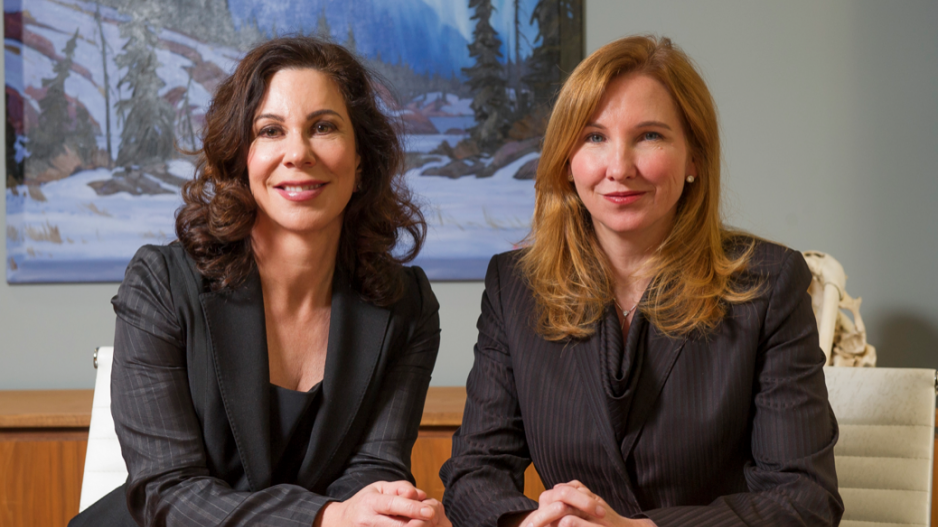If you were to ask mining duo Catherine McLeod-Seltzer and Eira Thomas to reminisce on their childhood, you would think the two grew up in the same household. Immersed in the industry through their mining families, Thomas vividly recalls trading the playground for geological sites while McLeod-Seltzer remembers talking “rocks and stocks” at the dinner table. Their fathers even crossed paths in the Arctic while working on their respective entrepreneurial endeavours. For anyone who knew the two, working together seemed to be the obvious next step.
McLeod-Seltzer and Thomas say it was not their similarities but their complementary differences that established their initial relationship. While McLeod-Seltzer had a financial background in capital raising on an international level, Thomas had more of a scientific background that was almost exclusively within Canada. Being almost a decade younger, Thomas felt there was a benefit in learning the skills that McLeod-Seltzer championed.
“I was a generation or so behind,” Thomas says. “So I was looking for a very particular mentorship, and [McLeod-Seltzer] had all the traits I would value in a business partner. So why wouldn’t I have her as a mentor?”
It wasn’t until a mutual friend suggested the two enter a joint venture that their relationship evolved, and they founded Stornoway Diamond Corp., a firm that went on to build Quebec’s first diamond mine.
The success story of these mining mavens is considered rare in an industry where men still dominate both in the boardroom and in the pit. In 2013, the Mining Industry Human Resources Council reported that women made up only 16 per cent of the industry workforce. Statistics went on to further indicate that the percentage was mainly composed of administrative positions, with only a fraction in trades and production roles.
From the outside looking in, Thomas says this kind of data can fuel misconceptions on why the gender disparity exists. “It’s a tough industry whether you’re male or female,” she says. “There’s no question it’s a male-dominated industry, but I think people have the wrong idea on how it challenges women.”
Thomas argues the lack of women in mining is a result of failing to introduce the industry to girls at a young age. “Mining is more than a bunch of guys in boots and pick-axes,” she says. “There’s a vast amount of opportunity to consider in an industry that’s been a mainstay since Canada was founded. I wish more women knew that.”
Thomas has made it her mission to expose a new generation of women to mining as a career option. Just as McLeod-Seltzer did for her, Thomas now dedicates time to mentoring highschool students and fresh female faces in the industry. The goal is to tackle misconception, above anything else.
But the lack of women is just the start of a broader conversation around diversity, says entrepreneur Lynda Brown, who sees a similar issue with gender imbalance in the technology field.
As CEO of Curatio, which provides online health tools, Brown says companies will not be able to survive without a diversified team. “If you’re going to build a global business, you need to reflect that in the makeup of your team,” she says.
Brown caught on to the idea that technology could be the key to solving more than just math equations after she won her first calculator in Grade 4. “I started to see patterns and linkages where others didn’t,” she recalls.
In regards to team architecture, one of the patterns Brown challenges CEOs to step outside is the “human desire” to hire within their social groups. “It’s against our cognitive behaviour, and there’s discomfort in that,” she says. “But we need to ask: ‘Am I connecting with this person because we’re alike? Or do they bring a valuable new perspective?’”
Unlike McLeod-Seltzer and Thomas, who created initiatives on their own, Brown is part of an extensive network of CEOs called Acetech. The non-profit organization creates opportunities for its members to connect through roundtable discussions, events and workshops.
Acetech doesn’t have any female-focused initiatives, which Shannon Susko, entrepreneur and lead at the Growth Strategy Program, says is a strategic play to support CEOs in the tech sector regardless of gender. “When you are leading a team, you have to hire the best person for the role,” Susko says.
Programs and awards that are distinctly for women, while important, may not always be crucial, she says.
“I think it’s great to celebrate because there’s a long history of where we’ve come from to where we are today,” Susko says. “But if we are serious about making sure women move forward, the first thing we need to do is to fix unconscious prejudices.”
Susko recalls her first experience of confronting that barrier when she sought the advice of her father for a business degree internship. His reply: “Why are you concerned about a career when you’re going to get married anyway?”
“I did get married. I did have kids,” Susko says. “But I have a career now as well, and I excel at it because of the foundation of support I have around me – the same support I found in Acetech.”
Brown echoes the same sentiments in joining the organization, saying that while entrepreneurship is heralded as innovative and exciting, most people forget to mention its difficulty. “It’s really lonely being an entrepreneur,” says Brown.
While the numbers showing a lack of women across various industries can cause alarm, McLeod-Seltzer and Thomas, who have navigated through the male-dominated mining industry for years, have some simple advice for other women: Do good work outside of the workplace.
“The industry out there is very much a meritocracy, but frankly, I can’t emphasize the power of getting and giving mentorship enough,” McLeod-Seltzer says. “It’s a two-way street, and there’s a bond that can last for decades.”




